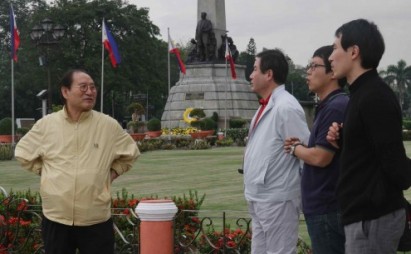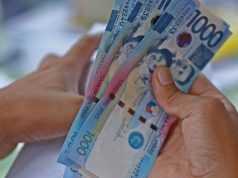
(Editor’s note: Cesar Polvorosa, Jr. is a professor of economics, world geography, and international business management in Canada. He is also a published writer in economics, business, and literature. In Part 1, he tackled the global context in which the Philippine economy will try to take off in 2015. In this last of two parts, he discusses the effects of remittances and other factors crucial to progress.
Remittances
Total cash remittances to the Philippines reached $23 billion in 2013, according to the Bangko Sentral ng Pilipinas (BSP). The US dominates cash remittance flows into the Philippines accounting for 43% while Saudi Arabia is second with about 9%.The other top ten sources of cash remittances include UK, UAE, Singapore, Japan, Canada, Germany, Hong Kong, and Norway.
An extended oil price downturn will jolt the oil producing countries that host major Filipino communities including their remittance flows. The migrant workers who lose their overseas jobs will then return to the Philippines, become unemployed or take lower paying domestic jobs. Of the top 10 destinations of overseas Filipinos, four are the major Middle East oil producers of UAE, Qatar, Kuwait, and Saudi Arabia. The major advantage of these four Mideast countries is that these are the lowest cost oil producers: It will take a long and steep slide of oil prices for their economies to be severely impacted.
Other non-Middle East major oil producing countries are also vulnerable such as Canada which is a high cost oil producer which can affect remittances, investments, and trade with the Philippines.
Remittances are usually stable as they are major sources of financial support for the family members and dependents of the overseas worker or immigrant. However, as the economy of the host society deteriorates it is inevitable that remittances will decline as employment contracts are not renewed or as working hours are reduced. Thus, remittance flows from Japan decreased by 10.5% during 2012-13 at the time that the Japanese economy was in the doldrums. Likewise, political uncertainty still pervades Hong Kong. Remittances likewise tanked from troubled southern European economies Italy and Greece as well as Canada in North America.
Foreign direct investments (FDI) and economic fundamentals
The Philippines is becoming increasingly attractive to foreign investors with the remarkable improvement in the country’s economic fundamentals over the past few years as demonstrated through credit upgrades and the rise of the country in international competitiveness.
There had been a steady increase in FDIs in the Philippines in recent years reaching $3.9 billion in 2013 reflecting a healthy 20% clip though the levels pale compared to say, Thailand ($12.8 billion) and Indonesia ($18.4 billion). The biggest FDI inflows into the Philippines by source countries included British Virgin Islands, USA, Japan, Netherlands, Singapore, and South Korea, according to the Board of Investments (BOI).
While Japan is mired in a prolonged slump it is still expected to be a major FDI player due to concerns regarding its graying population resulting in a shrinking domestic market as well as strategic issues on over dependence on the Chinese market. Likewise, China is an under-tapped investing country as it is rapidly transforming into a net overseas investor from its traditional FDIs recipient role.
However potentially profitable an FDI can be, the ultimate decision would depend on the will and capability of the investing firms as influenced by the financials and the economic conditions of the investing country.
The vibrant US economic rebound is a double edge sword for the Philippine economy. As the Federal Reserve shifts to higher interest rates to forestall possible inflationary pressures arising from strong economic growth, the US economy will siphon off funds from many developing countries including the Philippines. The outflow of funds will (and has already) adversely affect the country’s BOP. In the huge and complex US economy there will also be uneven impact of lower oil prices as some companies especially in costly shale oil operations will become financially unviable and lay-off workers.
On the plus side, a dynamic US economy will likely lead to more American FDIs in countries such as the Philippines and hire more workers that will increase the remittance flows into the Philippines. There will be greater demand for Philippine exports which will enhance Philippine BOP and GDP growth.
The US dollar is also expected to strengthen with the economic expansion and the hike in interest rates. Any pressure for a significant peso depreciation may somewhat be mitigated by the sound fundamentals of the Philippine economy especially economic growth, declining debt burden, ample international reserves, strong banks, as well as benign inflation rates because of lower oil prices. The robust Philippine economy will also moderate the debt spread as recognized by steady credit upgrades and favorable comparisons with the performance of other emerging economies.
On balance, the Philippine economy stands to gain substantially from a healthy US economy as “hot money” is unsustainable and a risky strategy to shore up the BOP while higher exports and FDIs brings employment benefits and greater multiplier effects on the economy into the long term.
Tourism and travel
The tourism industry is a major contributor to the modern economy. Tourism though is sensitive to economic conditions due to its highly discretionary nature (i.e. it’s not an essential expenditure).
The Philippines with its scenic wonders, great shopping, and unique blend of East and West is one of the emerging tourist destinations. The Department of Tourism reported that international tourist arrivals to the Philippines grew 2.3% reaching 3.96 million arrivals in 2013. Receipts to the Philippines expanded 7.14% to reach US$3.9 billion for the first 10 months of 2014 compared to the same period of 2013. South Korea accounted for an impressive 28% of all international receipts with P48.6 billion; followed by the US (P33.6 billion), Australia (P11 billion), Japan (P8.9 billion), and China (P7.6 billion).
With a booming US economy in 2015, Americans will have greater spending power and shall continue visiting the Philippines in great numbers. South Korea’s economic growth forecast for 2015 had a minor downward revision but this is minimal especially as it’s also a beneficiary of lower oil prices. Likewise, even with the anticipated softening of the Chinese economy their tourist arrivals are expected to be considerable – unless there is a spike in the geopolitical tensions with the Philippines. A resumption of paralyzing demonstrations is a potential constraint that will limit tourist arrivals from Hong Kong. A Japanese recession can adversely impact Japanese arrivals and is a serious issue as they constitute +9% of tourist arrivals. A lackluster German economy will have minimal effect as the 71,000 arrivals in 2013 is a mere 1.5% of the Philippine tourist market (clearly, the Philippines is below the radar of European tourists). With the crash of the Russian ruble and a sharp recession expected, the Russian tourist market which was being nurtured recently will subsequently become depressed for a year or more.
Postscript: Beyond 2015
The world had been blindsided by so-called “black swan events” – major unforeseen events such as especially 9/11 in the US and 3/11 in Japan. In 2014, the largely unforeseen shocks included the fall in oil prices, the fallout from the Ukraine crisis and the rise of ISIS. In short, while many major trends can be discerned there are also these “black swan events” that one prepares for as part of contingency planning in the Age of Uncertainty (http://www.interaksyon.com/business/96703/focus–5-strategies-for-philippines-in-a-new-era-of-global-uncertainty-part-2e).
To achieve prosperity beyond 2015 it is essential for the country to hurdle the formidable growth blocks on the path to sustainable growth. It can partly accomplish this by diversifying the economy – cultivating trade with relatively untapped markets of Canada, India, and Brazil and fostering industrial and agricultural growth.
The country needs to explore more international linkages such as the new Asian Infrastructure Investment Bank where the timetable includes formulating the Articles of Agreement by the end of 2015. The country may also consider exploring the New Development Bank initiative of the BRICS for access to additional and alternative global financial resources.
It is also imperative that the country prepares for the ASEAN Economic Community (AEC). AEC’s goal is regional economic integration in 2015 though there are complex issues given the wide diversity of the economies in the region and fierce competition among the member countries and their companies.
The Philippine economy is on track to grow at a highly feasible annual average of 6% or more from 2010 to the end of President Noynoy Aquino’s term in 2016 – which translates to the best sustained economic performance for the Philippines since the first half of the 1970s. However, in contrast to the soaring growth of the 1970s that laid the seeds of the external debt crisis a few years later, there is at present a stronger and more durable foundation in place. This will prime the Philippine economy into the “take-off” stage of higher growth rates after 2016 provided good governance and inclusive economic policies and reforms, among others, are judiciously implemented and become enduring.









